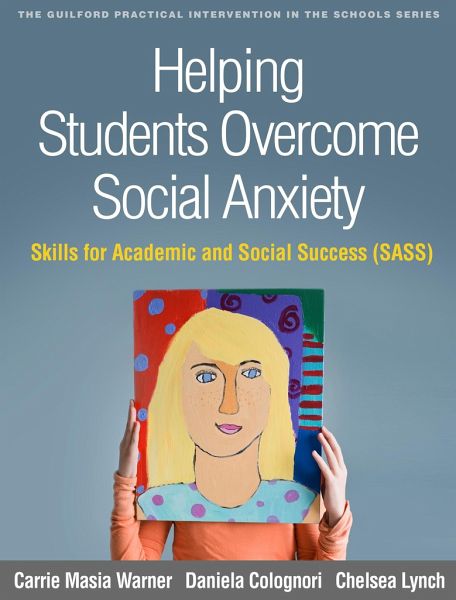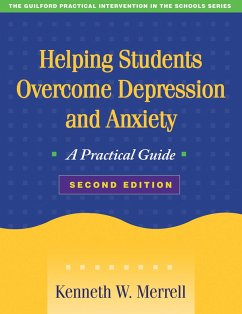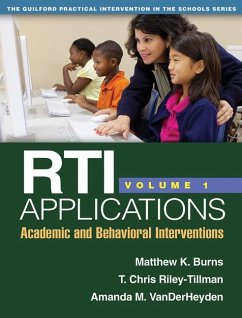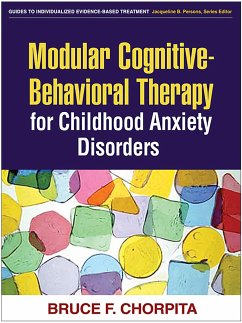Helping Students Overcome Social Anxiety
Skills for Academic and Social Success (Sass)
Versandkostenfrei!
Versandfertig in über 4 Wochen
Weitere Ausgaben:

PAYBACK Punkte
20 °P sammeln!




Social anxiety disorder causes significant distress and academic impairment for many adolescents. This unique book gives front-line school professionals innovative, easy-to-use tools for identifying and intervening with socially anxious students in grades 6-12.
Carrie Masia Warner, PhD, is Professor of Psychology at Montclair State University in New Jersey, Research Scientist at the Nathan Kline Institute for Psychiatric Research, and Adjunct Associate Professor in the Department of Child and Adolescent Psychiatry at New York University Langone Medical Center. Dr. Masia Warner is an expert in pediatric anxiety disorders and school implementation of evidence-based interventions. She has systematically developed and evaluated interventions for children and adolescents in community settings, with a focus on enhancing the identification and treatment of teenagers with social anxiety and training front-line school professionals. She has published over 65 peer-reviewed articles and book chapters. Daniela Colognori, PsyD, is Clinical Director of the Tourette Syndrome Clinic at the Graduate School of Applied and Professional Psychology at Rutgers, The State University of New Jersey. She is also a founding partner at Specialized Psychological Services, a private clinical practice, where she provides cognitive-behavioral therapy for individuals with anxiety, mood, tic, and body-focused repetitive behavior disorders. Dr. Colognori's research interests and publications focus on improving access to evidence-based interventions for youth with anxiety and mood disorders through partnerships with schools. Chelsea Lynch, MA, is a graduate student in the Clinical Psychology doctoral program at Florida State University (FSU). She worked in the NYU Langone Medical Center's Child Study Center on a randomized clinical trial evaluating the effectiveness of counselor-delivered cognitive-behavioral therapy for social anxiety in schools. Ms. Lynch has also worked in clinical outpatient, residential, and forensic settings. She currently conducts psychological assessments and provides evidence-based psychological treatment to adults and youth in the community as a student therapist in the FSU Psychology Clinic. Her research interests include evaluating psychological risk factors that contribute to the development and maintenance of co-occurring psychological disorders.
Produktdetails
- Verlag: Guilford Publications
- Seitenzahl: 241
- Erscheinungstermin: 7. März 2018
- Englisch
- Abmessung: 264mm x 203mm x 15mm
- Gewicht: 544g
- ISBN-13: 9781462534609
- ISBN-10: 1462534600
- Artikelnr.: 48746613
Herstellerkennzeichnung
Libri GmbH
Europaallee 1
36244 Bad Hersfeld
gpsr@libri.de
Für dieses Produkt wurde noch keine Bewertung abgegeben. Wir würden uns sehr freuen, wenn du die erste Bewertung schreibst!
Eine Bewertung schreiben
Eine Bewertung schreiben
Andere Kunden interessierten sich für













